
Most builders like to treat a bike as a blank canvas when it arrives in the shop. But when a Confederate arrives—well, that’s like trying to paint over a Rothko artwork. The X132 Hellcat has a brutal style you can see from a mile off.
But this Hellcat turned up at Revival Cycles with crash damage, due to a brake failure. And rather than just get the bike repaired, the owner wanted a change. He asked Revival for a transformation.
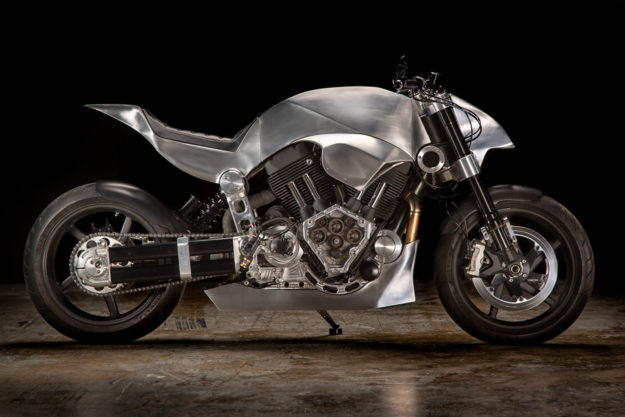
Of the dozens of builds Revival has finished since 2008, this was the most challenging from a design point of view. “It isn’t exactly an empty canvas that will easily accept changes,” the guys point out.
Fortunately, the technical side wasn’t so bad—the original chassis and most of the electrics could stay.
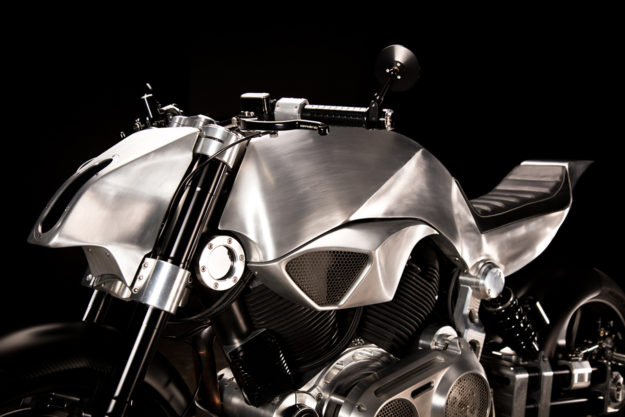
Revival founder Alan Stulberg started gathering ideas—sketching out drawings, finding images and shapes, and making cardboard bucks and taped line drawings.
After input and feedback from the Revival team, the design was ready—one that properly paid homage to the original, but took it a few steps further. And now the look is even more sculptured and brutal than Confederate’s original, with a 1950s science fiction art vibe.
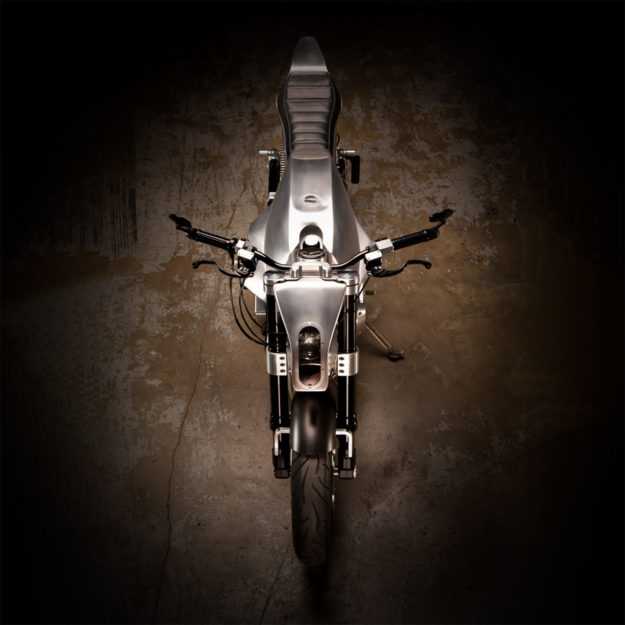
A hand-formed alloy fuel tank was fashioned to fit the Hellcat’s backbone and align with a new, more upright seating position. Then Revival attached a CNC-machined new subframe—fabricated in a similar way to the original, but with a more organic shape.
The seat height has been raised a little, and there’s new leather-clad seat pad with a slight upkick at the back, just like the original. (Which is handy when you have over 120 horsepower at your disposal.)
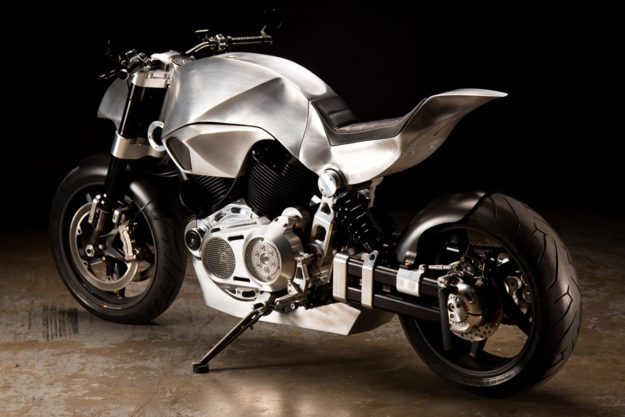
The tail section is hand-formed alloy too, and Revival have fitted complementary asymmetric panels to cover the oil cooler on the left side and the air intake on the right. A mesh screen was laser cut to match the primary cover screens.
The most unusual styling is right up front in the nosepiece: It’s hiding a xenon projector headlight from an Audi S8, in a porthole-style surround.

On the original Hellcat, the header pipe from the rear cylinder of the S&S motor snakes forward across the right side of the engine, covering it up.
So Revival have hand-built a completely new stainless steel exhaust with a 2-into-1 silencer that hangs down and exits beneath the engine, towards the ground. “The grumble and sound is intoxicating,” we’re told.

One of the finer touches of the earlier Hellcats was a combined belly pan and muffler. “This was removed on later models due to fabrication failures. As a homage, a new hand-shaped alloy belly pan has been fabricated to conceal the exhaust and engine underside.”
Hidden exhaust cutouts and a mesh air scoop insert allow for more airflow, and a smooth, clean appearance.
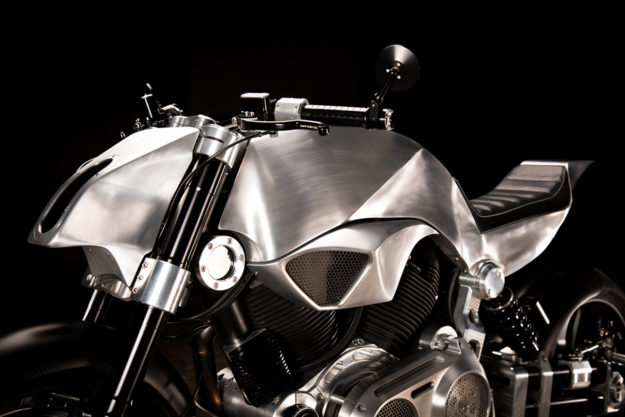
To make this Hellcat more comfortable and controllable, the factory clip-on bars are gone. Conventional bars are locked in place with a custom clamp, machined to carefully blend with Confederate’s triple clamps. “This improves the ergonomics and means a day-long ride won’t kill the rider.”
Revival Cycles’ own push-button alloy housings have been fitted to the bars, along with alloy push buttons. It’s now a simple cockpit that feels and functions as good as it looks.
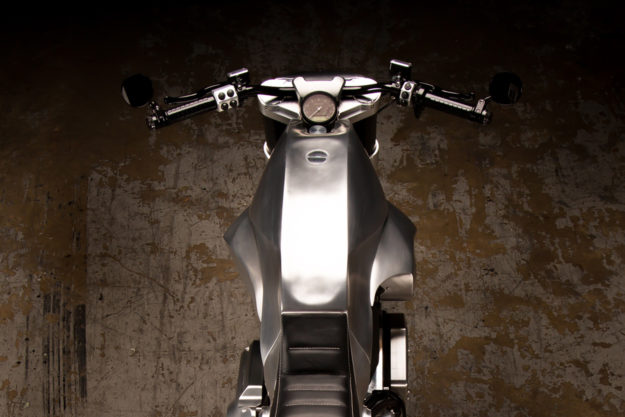
The Confederate has already been out on the road for a shakedown, and has been renamed The Revival 140. “Any motorcycle that weighs less than 500 pounds and has 140 foot-pounds of torque deserves to be known by that name.”
To see it in the metal for yourself, head over to Austin, Texas, for the Handbuilt show on April 21-23. It’s a fine celebration of traditional skills and physical craftsmanship—exactly the qualities the Revival crew have imbued in this most unlikely of builds.
Revival Cycles | Facebook | Instagram
